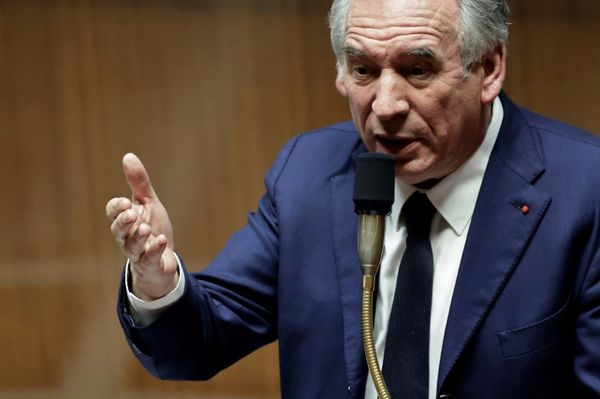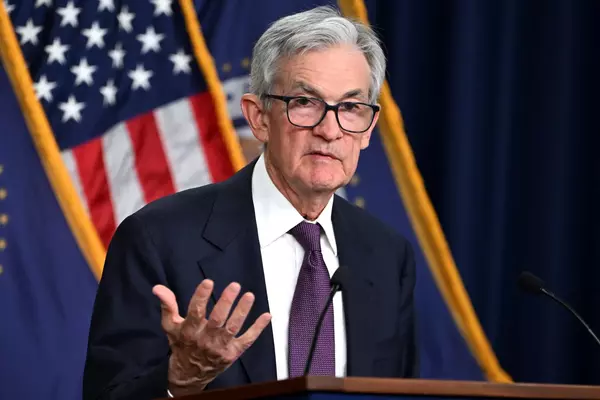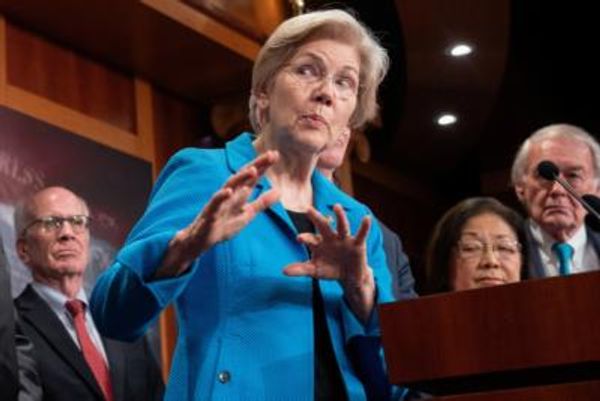
A decade before the arrival of New York Times correspondent Declan Walsh’s The Nine Lives of Pakistan: Dispatches from a Precarious State—which was released in the United States on Nov. 23—another major book of long-form reportage about the country’s chaotic post-9/11 years was published: Nicholas Schmidle’s To Live or to Perish Forever. The two books open with anecdotes of the authors being suddenly ordered to pack their bags and expelled from the country after reporting stories that crossed a red line for Pakistan’s security services—Schmidle for reporting on the Pakistani mutation of the Taliban and Walsh for his coverage of the insurgency in the vast, rural Balochistan province. Walsh’s book comes more than seven years after he was kicked out of Pakistan in May 2013.

In news reporting, most of the work must frustratingly remain in a journalist’s notebook. Walsh draws on these notebooks to write his book, finally able to give previous reporting trips the full literary treatment that they deserve. But it raises the question of whether reporting from Pakistan, some of it nearly 20 years old, gives readers new insights into a uniquely complex society. Walsh himself claims he will take the reader with him, retracing his steps, on a journey “deep into the psyche of the country.”
Walsh’s book is better than Schmidle’s, but the nearly identical opening scenes are a metaphor for a larger problem with writing about Pakistan, an ethnically diverse nation of more than 200 million people that is in constant flux. In the decade between the publication of these two major books of reportage that purport to explain Pakistan, the country itself has grown and evolved rapidly. The Pakistan discourse has still not caught up.
It would be unfair to dismiss Walsh’s efforts. He spent nine years reporting from Pakistan, at least twice as long as a normal foreign correspondent’s tenure. He covers Islamist militancy, radicalization, terrorism; liberal reformers and elite subjects; the military’s reach into domestic politics and foreign policy; and, uniquely for Walsh, the hidden unrest in Balochistan. His lively portraits of a range of Pakistani political figures (almost all of whom are now dead, either through violence or natural causes) are imbued with qualities that only time and experience in a society can produce.
The best chapters are those whose subjects and stories, while famous, are less well known outside of Pakistan, drawn out with new details and anecdotes. Walsh profiles the retired Inter-Services Intelligence officer Sultan Amir Tarar, known as Col. Imam, who was a key field liaison with the Afghan mujahideen in the 1980s and then the Afghan Taliban movement in the 1990s. Walsh’s many sessions with the Muslim cold warrior as a source over the years allow him to go behind the screen of the man’s true belief—eventually, inevitably, his demise—and witness moments of disenchantment and doubt.
“In a way, we are all mercenaries,” Col. Imam tells Walsh, while holding a piece of the Berlin Wall given to him by a U.S. counterpart in the 1980s. On one last mission, this time as a fixer for a journalist, Col. Imam is taken captive by a jihadist group allied with the Pakistani Taliban, which was in the midst of a terrorist campaign against Pakistan’s cities. Walsh is one of the recipients of the group’s ransom demands. Ultimately, Col. Imam is executed on camera. He, like Pakistan, is a “Frankenstein confronted by his monster.”
Students of Pakistan will find compelling new details, however minor, even when drawn from already well-covered personalities such as Asma Jahangir, the indefatigable human rights activist and critic of the military’s domestic power.
Subjects already saturated by ink are also filled out with enjoyable scenes captured by Walsh’s gimlet eye, including a surreal state dinner thrown by then military ruler Pervez Musharraf on the eve of his resignation. “And although the musicians of the state orchestra appeared to be vigorously thrashing their instruments, the music was coming from a recorded soundtrack,” Walsh writes. “It seemed an apt coda to the Musharraf years: the ship was going down, the deckchairs were empty and the band was only pretending to play.”
There are Pakistanis’ unguarded moments at dinners and parties attended by Walsh in the Islamabad churn that capture subtleties of elite psychology that others might miss. “We hate her … because she is like us,” one diplomat’s daughter tells him, of former Prime Minister Benazir Bhutto. He takes us on a neon-lit tour of the cosmopolis on the Arabian Sea, Karachi, circa 2012, from parties at the crumbling mansion of a princess to a noir sketch of the city’s corrupt but crime-fighting anti-Taliban top cop.
As a result of his experience and time spent in Pakistan, there is certainly a great deal to enjoy and much about the book that surpasses other writing in this genre. However, Walsh’s book still suffers from many of the same pathologies and omissions that plague reporting about Pakistan in the 21st century.
Part of the problem is how far removed much of the book is from the current moment. The “unplanned revolution,” in the words of eminent researcher Arif Hasan, at the intersection of demographic change, urbanization and its attendant economic shifts, and the erosion of traditional structures in Pakistani society were well underway during Walsh’s time in Pakistan. But the political expression of many of these changes, the emergence of the middle class and a post-ethnic politics that would carry Imran Khan to the prime minister’s office in 2018, in particular, was brought into focus in the 2013 election. So it is a shame that Walsh was expelled at that moment, just ahead of a dramatic reduction in violence nationwide that may have allowed for a focus on the understudied structural changes in Pakistan that aren’t easily explained by the well-worn narratives.
Walsh’s chapters on the Bhutto’s return from exile and the Lal Masjid siege in 2007 that marked the beginning of a deluge of violence in Pakistan offer little that hasn’t already been covered. Through a profile of a Pashtun tribal chief and parliamentarian, Walsh writes about the emergence of the Pakistani Taliban and the violent changes wrought on Pashtun society in northwestern Pakistan after foreign jihadis flooded across the border from Afghanistan in 2002. This dynamic is also well known.
Less has been written about the major socioeconomic changes in majority-Pashtun areas of Pakistan by labor-remittance flows from the Persian Gulf and other parts of the country, internal migration, and the rise of economic power in part through control of transportation and logistics across much of Pakistan—and, as a result, growing political influence.
In part fueled by this growing Pashtun middle class, a grassroots political protest movement has erupted among young men from the tribal areas who grew up amid the punishing violence and counterinsurgency by the Pakistani military and represents a further significant development. Since Walsh departed, so much has happened, and it is a shame that a new book will frame these questions in an outdated way, eliding much of the past decade.
Walsh’s focus on well-known high-profile elites—rather than newer, understudied ones such as the real estate billionaire Malik Riaz—is also frustrating. There is a chapter on Salman Taseer, the larger-than-life, complicated tycoon who became a principled critic of Pakistan’s poisonous blasphemy laws and paid the ultimate price for it. It’s based primarily on interviews with Taseer and his family and friends. But there is very little about Taseer’s assassin, Mumtaz Qadri, who was celebrated by many people in urban Pakistan, and thus we don’t learn much more about the intractability of the issue.
We are told that the law is instrumentalized by those in power to serve their interests or can be a “frustrated howl” by resentful lower classes. But Qadri’s middle-class background and the outpouring of support from certain constituencies indicate that there is something deeper to learn about society through the issue. I couldn’t help but wish that Walsh had deeply reported a profile of Qadri, his family, and his community in Rawalpindi instead. This kind of reporting from the grassroots would be a first step toward apprehending the psyche of society.
There is a persistent trope in Western writing about Pakistan that involves questions about the viability of Pakistan as a country and whether it will be able to survive as such. Pakistan’s first leader, Muhammad Ali Jinnah, “failed to pull together the fraying fabric of his creation, held together by the thinnest of threads,” Walsh writes. “Six decades later, they would be close to snapping.”
Walsh uses the case of Balochistan to illustrate this overburnished existential framing. The reporting on the conflict there that would result in his expulsion is the single largest topic in the book, almost in inverse proportion to Balochistan’s small population (and the Pakistani military’s attempts to hide the insurgency there from public view). These chapters offer a profile of Akbar Khan Bugti, the tribal lord whose dispute with, and then killing by, Musharraf in 2006 sparked an insurgency against the state by Bugti tribesmen and a brutal counterinsurgency and proxy war that continues to this day.
In the end, Walsh states that “not for the first time, Pakistan’s army was trying to hold the nation together by force … in squeezing it too hard, there was a distinct danger that it might break entirely.” Later, he ends the book with a scene from a Balochi militant video filmed in 2013 in which a group of men trash and then set alight Jinnah’s old summer residence near Quetta: “A window shatters. Dogs bark. The masked men vanish into the night as the house of Jinnah burns silently.” It’s a neat metaphor to illustrate the conclusion that Pakistan is still suffering from an existential crisis, more than 70 years after independence, and that this might lead to Pakistan’s disintegration as a nation-state. But it’s also a tired one.
In a final chapter set partly in Mumbai, Walsh compares Pakistan to India. Through the narrative of Jinnah and Partition, he measures Pakistan, again, by a psychological yardstick, while India’s policies are assessed through its perceived interests. “The trauma of partition, and the confusions of faith and identity it created, lurked behind the most enduring pathologies I encountered,” Walsh writes. “Although Pakistan was built on faith, Islam offered an incomplete identity. Negation of India filled the void.”
These descriptions, of course, equally apply to India. Even in Indian state and local elections far from the border, Indian politicians invoke Pakistan and smear their rivals as being in league with the enemy—a platform that apparently is successful. “If BJP loses Bihar elections … crackers will be burst in Pakistan,” Amit Shah, the second-most powerful official in India, claimed at a 2015 rally in the eastern state. Three paragraphs are tacked on toward the end of the chapter that admit to India’s “lurch into belligerent Hindu nationalism,” but the relevance of this argument to the broader region is left largely unexplored.
After all, this “negation” of the other is not a uniquely Pakistani problem. The current administration in New Delhi has unilaterally annexed the portion of Kashmir under its control and begun settling the disputed territory with non-Muslim Indians, and its defense minister has said Pakistan-administered Kashmir is next. The government that is enacting these policies is driven by a fascistic anti-Muslim religious ideology that fuels pogroms, lynchings, and the election of terrorism suspects—and it is overwhelmingly popular with Indians. But in the pages of The Nine Lives of Pakistan, and to South Asia watchers in Washington and elsewhere, Pakistan alone is presented as a “land of broken maps”—as Walsh describes it—that is suffering from a destabilizing religious identity crisis rooted in resentment and colonial history.
Walsh’s book is a laudable addition to writing on Pakistan. It is of course not his fault that he was forced to leave in 2013 and has not worked on the region since. However, given the scarcity of books by major writers about the country, when they are published they hold an outsized weight. It is a missed opportunity that even a new book is focused on a previous era that only partially explains Pakistan in 2020.







